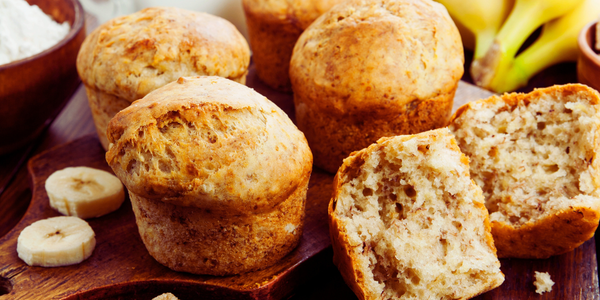Vegetarian Wraps

Variations and Twists
Vegetarian wraps are incredibly versatile, allowing for endless variations. Experimenting with different ingredients can keep your meals exciting. Here are a few ideas to get you started.
Add a Protein Punch
Boost the protein content of your wrap by adding tofu, tempeh, or chickpeas. These ingredients are not only healthy but also very filling. Marinate the tofu or tempeh for added flavor before cooking.
Another option is to use lentils or quinoa as a base. These grains are packed with protein and can be seasoned to fit any flavor profile. Just make sure they are cooked and cooled before adding them to your wrap.
For a quick protein boost, use canned beans like black beans or kidney beans. Rinse them well and mix with some seasoning. This makes for an easy and nutritious addition.
Explore International Flavors
Travel the world with your taste buds by incorporating international flavors into your wraps. Try using ingredients like hummus, falafel, and tzatziki for a Mediterranean twist. These ingredients add a unique taste and texture.
For a Mexican-inspired wrap, add black beans, corn, and salsa. Top it off with some avocado and a squeeze of lime. This combination offers a vibrant and fresh flavor.
If
Vegetarian wraps have swiftly become a favorite among health-conscious individuals, offering a versatile and delicious alternative to traditional sandwiches. Whether loaded with seasoned chickpeas, fresh vegetables, or a tangy hummus spread, these wraps are as satisfying as they are nutritious. Even in culinary circles, they are hailed for their adaptability and flavor complexity.
Historically, wraps have roots tracing back to Mediterranean and South Asian cuisines, where flatbreads have long been used to encase various fillings. Today, they hold a prominent place, with the vegetarian wrap market expected to grow by 8% annually according to recent food industry reports. Offering both convenience and variety, they address the increasing demand for plant-based meal options without compromising taste or nutritional value.

Ingredients for Vegetarian Wraps
Making vegetarian wraps is easy and fun. The ingredients are simple and can be customized to your liking. Below is a list of essential items you'll need to make delicious and nutritious wraps.
- 1 medium-sized whole grain or gluten-free wrap
- 1 cup fresh spinach or lettuce
- ½ cup shredded carrots
- 1 small cucumber, sliced thinly
- 1 medium tomato, diced
- ½ cup cooked chickpeas or black beans
- ¼ cup hummus or any preferred spread
- ¼ cup crumbled feta cheese (optional)
- 1 teaspoon olive oil or vinegar for dressing
- Pinch of salt and pepper for taste

General Information About Vegetarian Wraps
Vegetarian wraps are a delicious and healthy option for any meal. They are easy to make, and you can use fresh ingredients that you love. Below is a table that gives more details about making vegetarian wraps, including how long it takes and how many people it serves.
General Information
This table provides details about the general information of making vegetarian wraps.
These details include making difficulty, preparation and cooking time, serving size, and meal type.
| Category | Details |
|---|---|
| Making Difficulty | Easy |
| Preparation Time | 10 minutes |
| Cooking Time | No cooking needed |
| Serving Size | 1 wrap per person |
| Meal Type | Main Course or Snack |
Instructions for Making Vegetarian Wraps
Making vegetarian wraps is fun and simple. You can customize them with your favorite ingredients. Follow the steps below to create a tasty and nutritious wrap.
Step 1: Gather Your Ingredients
Start by collecting all the fresh ingredients you'll need. This includes vegetables, a spread like hummus or guacamole, and the wrap itself. Make sure everything is washed and ready to use.
Having everything prepped before you start will make the process quicker. Lay out your ingredients on the counter to keep them handy. It's best to chop or slice your vegetables now, so they’re easy to add to the wrap.
Step 2: Prepare the Base of the Wrap
Spread a thin layer of your chosen spread across the whole grain or gluten-free wrap. This could be hummus, guacamole, or even a light dressing. This layer adds flavor and helps keep the fillings in place.
Be sure not to use too much, or it could make the wrap soggy. A smooth, even layer will work best. This is the foundation of your wrap and adds an extra layer of taste.
Step 3: Add Your Vegetables
Next, add a generous amount of fresh vegetables. Place the spinach or lettuce first, as this will act as a cushion for the other ingredients. Follow up with shredded carrots, sliced cucumber, and diced tomatoes.
You can also add other veggies you like, such as bell peppers or avocado. Be mindful not to overload the wrap, as it can make rolling it up difficult. Distribute the vegetables evenly for balanced bites.
Step 4: Incorporate Protein and Cheese
Include a source of protein to make the wrap more filling. Chickpeas, black beans, or tofu work great. Spread them out over the vegetables to ensure an even mix.
If you like cheese, sprinkle a small amount of crumbled feta or shredded cheese. This adds some creamy texture and extra flavor to the wrap. Make sure the protein and cheese are evenly distributed.
Step 5: Roll and Serve
Rolling the wrap can be a bit tricky, but with practice, it gets easier. Start from one end and carefully fold it over the fillings, tucking in the sides as you go. Keep rolling tightly until you reach the other end.
Use a sharp knife to cut the wrap in half if you prefer smaller pieces. Serve immediately or wrap it up to enjoy later. Your vegetarian wrap is now ready to eat, offering a delicious and healthy meal option.
Important Things to Keep in Mind
When making vegetarian wraps, choosing fresh ingredients is key. Fresh vegetables not only taste better but are also richer in nutrients. Always wash and prepare your veggies before assembling your wrap.
Consider dietary restrictions you or your guests might have. Options like gluten-free wraps and vegan-friendly spreads can make your wraps more inclusive. It's easy to adjust ingredients to meet different dietary needs.
Balance is important for both taste and nutrition. Try to include a mix of proteins, healthy fats, and carbohydrates. This will make your wrap both satisfying and nutritionally complete.
Pay attention to portion sizes. Overstuffing your wrap can make it difficult to roll and eat. Keep your fillings moderate to maintain the wrap's structure and ease of consumption.
Experiment with different flavors and textures. Adding crunchy elements like nuts or seeds can enhance the wrap's overall experience. Changing up your spreads or trying different vegetable combinations can keep things exciting.
Finally, don’t forget about storage. If you're making wraps ahead of time, store them in an airtight container to maintain freshness. Refrigerate your wraps to keep the ingredients crisp and delicious until you're ready to eat.
Variations and Twists
Vegetarian wraps are incredibly versatile, allowing for endless variations. Experimenting with different ingredients can keep your meals exciting. Here are a few ideas to get you started.
Add a Protein Punch
Boost the protein content of your wrap by adding tofu, tempeh, or chickpeas. These ingredients are not only healthy but also very filling. Marinate the tofu or tempeh for added flavor before cooking.
Another option is to use lentils or quinoa as a base. These grains are packed with protein and can be seasoned to fit any flavor profile. Just make sure they are cooked and cooled before adding them to your wrap.
For a quick protein boost, use canned beans like black beans or kidney beans. Rinse them well and mix with some seasoning. This makes for an easy and nutritious addition.
Explore International Flavors
Travel the world with your taste buds by incorporating international flavors into your wraps. Try using ingredients like hummus, falafel, and tzatziki for a Mediterranean twist. These ingredients add a unique taste and texture.
For a Mexican-inspired wrap, add black beans, corn, and salsa. Top it off with some avocado and a squeeze of lime. This combination offers a vibrant and fresh flavor.
If you’re in the mood for Asian flavors, use ingredients such as tofu, fresh veggies, and a drizzle of soy sauce or teriyaki. Add some sesame seeds for extra crunch. This creates a delicious fusion of tastes.
Get Creative with Sauces and Dressings
The right sauce can elevate your wrap to the next level. Try using homemade dressings like tahini sauce or a simple vinaigrette. These can be made in advance and stored in the fridge for convenience.
Experiment with different spreads such as pesto, tzatziki, or even a spicy sriracha mayo. Each spread adds its own unique flavor and can change the overall taste of the wrap. Don't be afraid to mix and match to find your perfect combo.
If you prefer something lighter, a squeeze of fresh lemon or lime juice can do wonders. It adds a zesty flavor that brightens up the whole wrap. Fresh herbs like cilantro or parsley can also provide a burst of freshness.
Ultimate Veggie Wrap
Conclusion
Vegetarian wraps offer an exceptional blend of taste, health benefits, and culinary flexibility. They cater to a wide range of dietary restrictions and preferences. Whether you're looking to boost protein, explore international flavors, or simply enjoy a fresh, convenient meal, vegetarian wraps are a perfect choice.
With endless variations and simple preparation steps, they fit seamlessly into any lifestyle. Experimenting with different ingredients and techniques can keep your meals exciting and nutritious. Embrace the creativity and enjoy the journey of making delicious vegetarian wraps.
Sign up for FD's newsletter
The freshest stories from the food and dating world every week.




